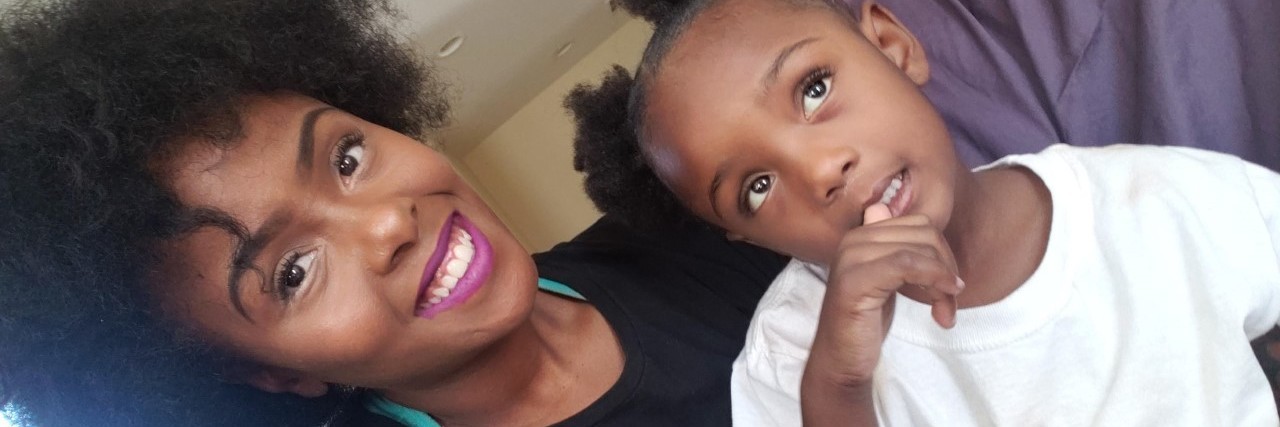When you first meet my 5-year-old daughter Gia, you might notice how smart she is. She loves drawing, reading, and collecting toys. She enjoys watching Paw Patrol and My Little Pony and spending time with her big sister. But after spending some time with her you might also notice that she pays much more attention to drinking enough water and eating healthy foods than the average child. She is extremely aware of when her body needs to rest and has learned at a young age how to advocate for herself in hospitals and doctors’ offices. My daughter is a sickle cell warrior and one of the strongest people I know.
I was pregnant with Gia when I learned that she likely had sickle cell disease (SCD). I knew very little about the condition. In fact, I had forgotten that I was a carrier of the sickle cell trait until Gia was diagnosed. I soon learned that SCD is a rare genetic disease, which can cause red blood cells to adopt a “sickle” shape. As a result of their shape, the cells are unable to effectively transport oxygen throughout the body. Patients can experience a wide range of health complications, including anemia, chronic pain, infections, heart disease, kidney failure, stroke, liver disease and pulmonary hypertension. The disease is most commonly seen in people of African descent but the incidence is also higher among people of Hispanic, Middle Eastern, Asian, Mediterranean and Indian descent. While treatments are available to provide relief from some symptoms of SCD, there are no treatments that address the condition’s root cause.
Our family has learned a lot about SCD since Gia’s birth in 2015. Perhaps the most life-changing information we discovered is that SCD is widely underserved in the medical community and by the general public. When Gia had her first sickle cell crisis at 18 months old, the emergency room doctor gave her Tylenol and an antibiotic shot before sending us home. She was diagnosed with life-threatening double pneumonia three days later by a doctor at a different hospital. I began to worry about whether she would be able to access effective medical treatment in the future.
As we faced Gia’s recurring battles with pneumonia and pain crises, our family also learned about the non-medical struggles SCD patients and their families experience. In many cases, medical professionals question whether an SCD patient really needs pain medication during a crisis because they often appear healthy. This can increase the risk of life-threatening complications. Employers and others often think that caregivers are taking advantage of family leave policies when they miss work due to medical appointments and hospital stays. I lost my job as a result of this lack of understanding. Patients and their families regularly struggle financially as a result of missed work and mounting medical bills. While many challenges might be alleviated with increased awareness of SCD, patients often hesitate to share their experiences because of the stigma associated with the condition. I decided to be a part of the change the SCD community desperately needed.
In 2018, I created the Dreamsickle Kids Foundation as the first SCD advocacy organization in Nevada, our home state. Our goal is to improve the lives of those living with sickle cell and other rare diseases. In just over two years, we have raised over $25,000 to assist families by providing them with transportation to medical appointments and financial support to cover essential expenses such as rent and food. We have also provided scholarships to medical providers who want to become involved in SCD research and patient care.
Our group is most proud of the role we played in the passage of Assembly Bill 254, which requires all health insurers in the state to cover important services and medications for people living with SCD. This legislation also established the state’s first sickle cell registry to gather more accurate information regarding the prevalence and impact of SCD in Nevada. This information is critically important in the fight to raise awareness and gather supportive resources for SCD patients and families.
My hope is that the Dreamsickle Kids Foundation has an impact that extends beyond the rare disease community in Nevada. I hope that one day, sickle cell and other rare diseases will have effective treatment options that are accessible to anyone who needs them. I hope that my daughter is never questioned by her employer if she needs time off for medical appointments or by a doctor who does not believe that her pain is real and severe enough for medical attention. But in the meantime, I hope that she is never afraid to speak up and share her story. I want her to be proud to be a Sickle Cell Warrior.
Getty image by Disobey Art.

